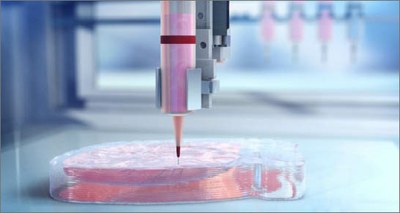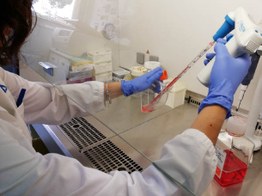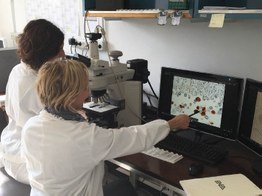Innovation: from 3D printing faster screenings for targeted tumor drugs
4/6/2020
 Manufacturing more effectual antitumor drugs for precision therapies, lowering costs and times thanks to an innovative R&D method, which uses 3D printing to reproduce a micro-tumor inside a highly engineered chip.
Manufacturing more effectual antitumor drugs for precision therapies, lowering costs and times thanks to an innovative R&D method, which uses 3D printing to reproduce a micro-tumor inside a highly engineered chip.
It’s the objective of the project 3DKarkynos, conducted by ENEA jointly with the company Kentstrapper in Florence, specialized in 3D printers manufacturing. The project, targeted at the "Development of a vascularized tumor prototype using 3D bio-printing for the screening of chemotherapy drugs", was selected among the 21 initiatives eligible for funding available on "Proof of Concept" 2020, the 2.5 million euro Internal Investment Fund created by ENEA to implement development projects capable of demonstrating the feasibility of innovative technologies and promoting their technological transfer to industry.
 This specific project will be allocated 47 thousand euro, entirely provided by ENEA. "This method will allow drug screening based on a biological model closer to reality than any other in vitro model currently available and reduce, not only the time and costs of experimentation, but also the use of animal models," Francesca Antonelli at the ENEA Biomedical Technologies Laboratory pointed out.
This specific project will be allocated 47 thousand euro, entirely provided by ENEA. "This method will allow drug screening based on a biological model closer to reality than any other in vitro model currently available and reduce, not only the time and costs of experimentation, but also the use of animal models," Francesca Antonelli at the ENEA Biomedical Technologies Laboratory pointed out.
"Today, research of antitumor drugs is mainly conducted employing cell cultures – not infrequently lacking in predictive value - and animal models – which makes it increasingly required to find innovative solutions aimed at reducing their use in drug testing.
What’s more, it takes up to 15 years for a new medicine to go from the discovery of a new molecule to entering the market with the expenditure of human and economic resources, Antonelli concluded. The project aims to 3D print a "prototype" of glioblastoma, the most common brain tumor, using a low-cost commercial printer suitably modified, opening new perspectives in sectors such as tissue engineering, pharmacological controls and tumor research, with a triple innovative value. In addition to the 3D bio-printer tecnology, useful for high precision biomedics, a chip to test new medicines for aggressive brain tumors and an additional cutting-edge technique: microfluidics, will be implemented.
 In practice, the traditional heads for the extrusion of polymeric material will be replaced by microsyringes which, through special "biological inks" made up of mixtures of cells, biocompatible polymers and biomolecules, will compose complex three-dimensional vascularized anatomical structures, that is, tumor models. With minimal quantities of samples, these sophisticated and tiny "on-a-chip" devices will be capable of "mimicking" the structures of tumors blood vessels, reproducing their microcirculation, functionality and complexity.
In practice, the traditional heads for the extrusion of polymeric material will be replaced by microsyringes which, through special "biological inks" made up of mixtures of cells, biocompatible polymers and biomolecules, will compose complex three-dimensional vascularized anatomical structures, that is, tumor models. With minimal quantities of samples, these sophisticated and tiny "on-a-chip" devices will be capable of "mimicking" the structures of tumors blood vessels, reproducing their microcirculation, functionality and complexity.
In addition to developing innovative biological models and new patents, this approach will help establish networks of open laboratories for the use of free access tools for the scientific community (scientific journals, software, hardware, resources) with the aim of reducing research costs and promoting comparison of results among different teams, with a view to exchanging knowledge.
